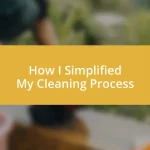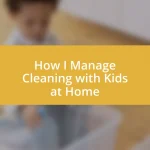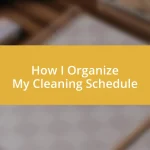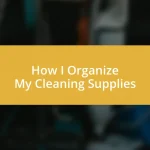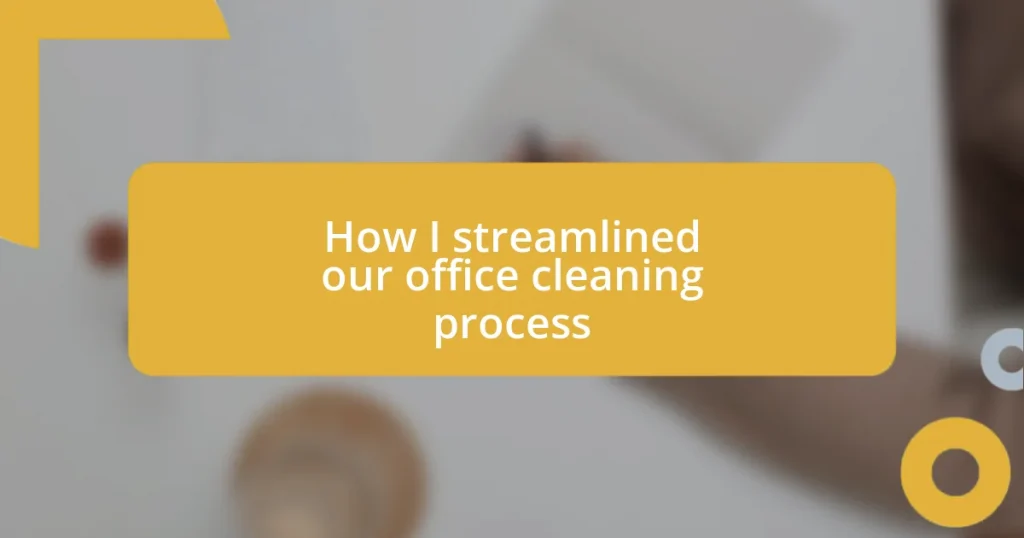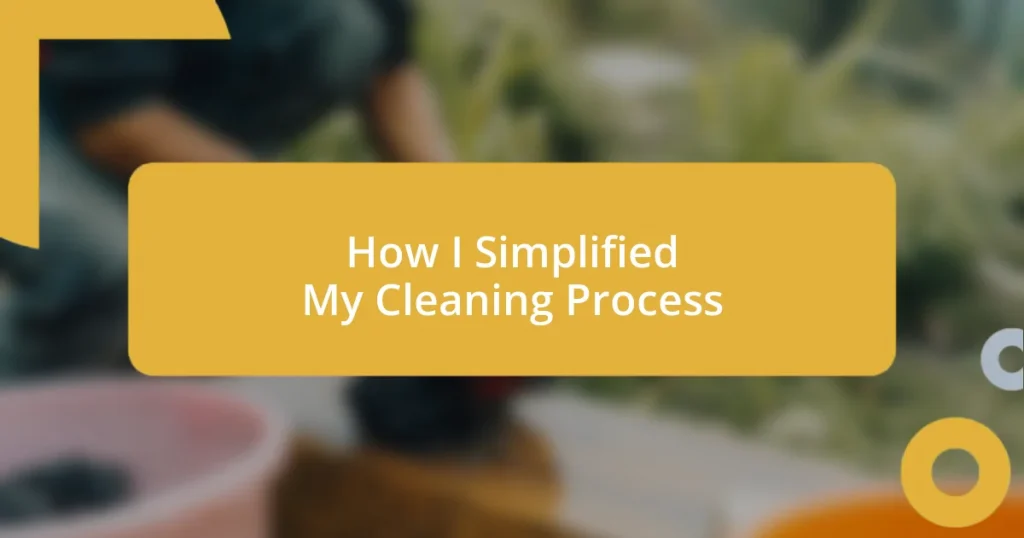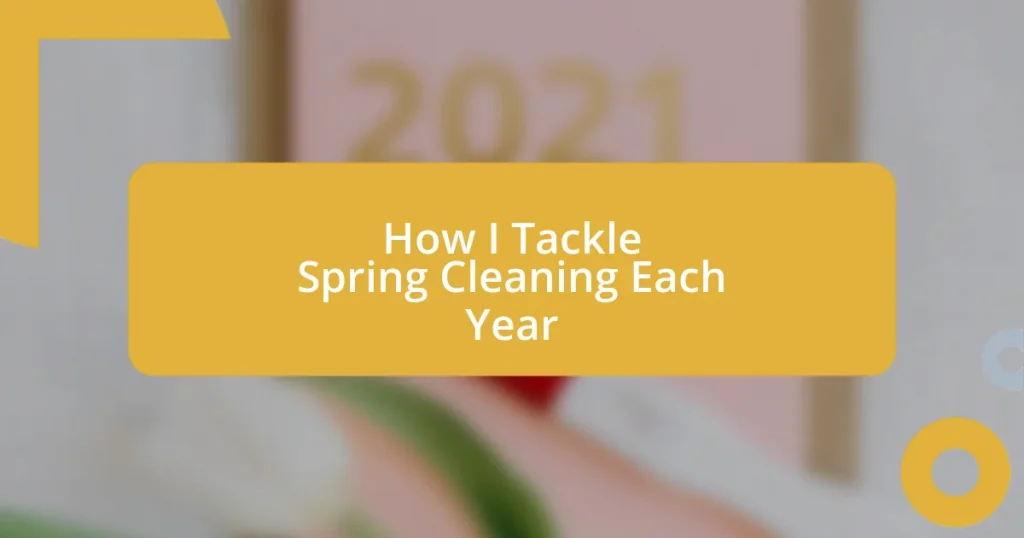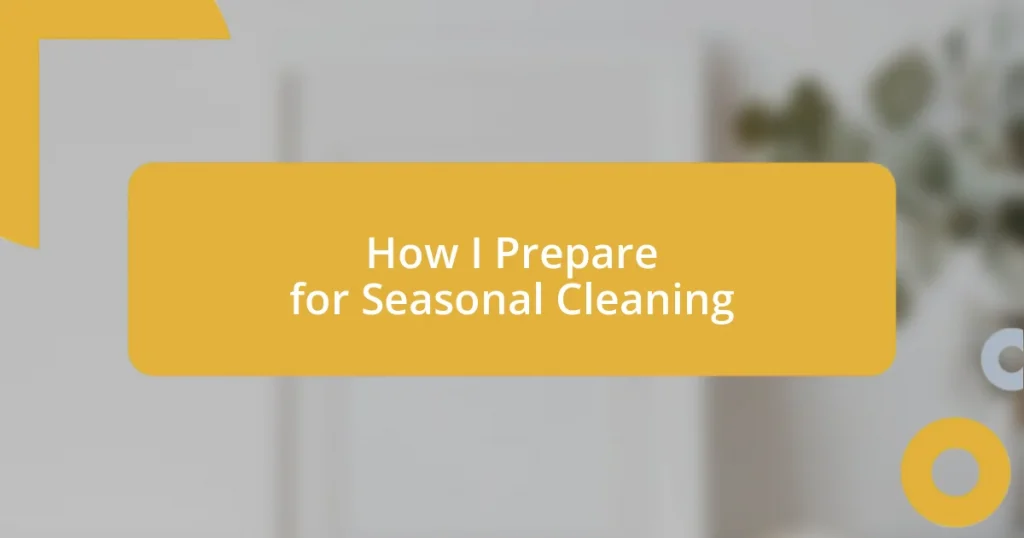Key takeaways:
- Identifying and addressing inefficiencies in the cleaning process, such as duplicated efforts and supply issues, significantly improved workflow and morale.
- Implementing a standardized checklist provided clarity in responsibilities, fostering accountability and enhancing communication among the cleaning team.
- Regular feedback and ongoing training, alongside recognition programs, promoted a culture of continuous improvement and team engagement in maintaining cleaning standards.
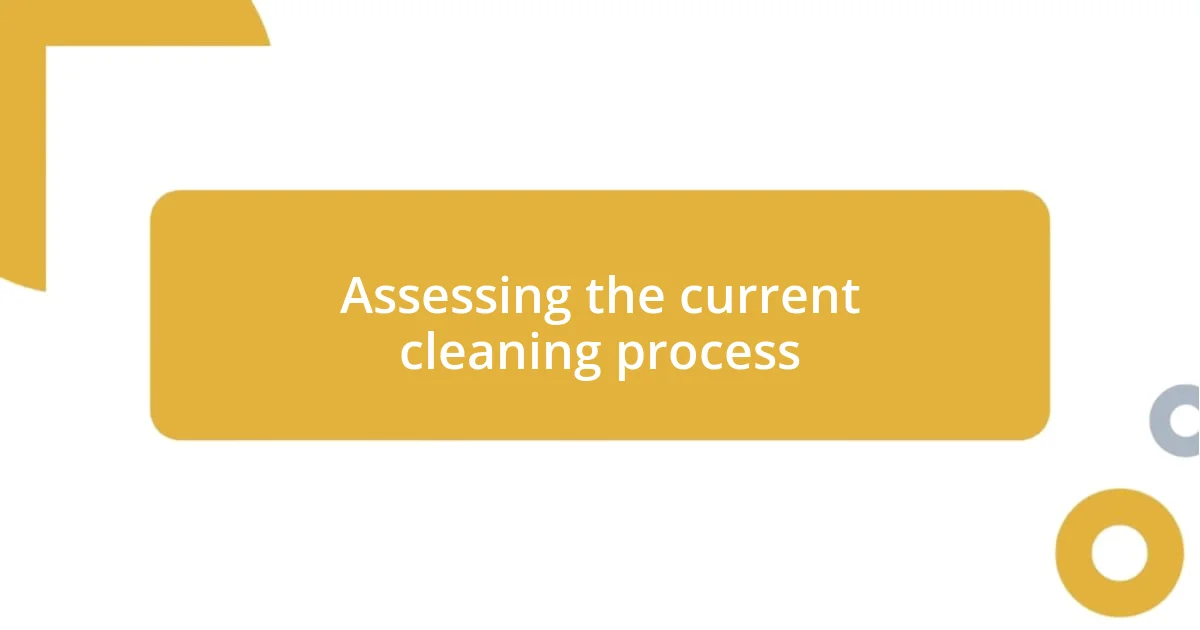
Assessing the current cleaning process
To truly understand the effectiveness of our office cleaning process, I decided to observe firsthand how the team was performing their tasks. I recall walking through the office one morning, watching our cleaners navigating around clutter and missing supplies. It struck me as both chaotic and inefficient—how could we expect our space to feel fresh and welcoming when the cleaning wasn’t streamlined?
As I delved deeper into the cleaning schedule, I was surprised to discover how many tasks were being duplicated. Were we really making the best use of our time? I felt a little frustrated knowing that simple adjustments could improve our overall efficiency and morale, transforming our office into a polished, vibrant environment instead of a reactive mess of cleaning.
In conversations with the cleaning team, I found they had valuable insights about the challenges they faced daily. Listening to their experiences illuminated gaps in communication and resources—it made me realize the importance of considering their perspective. How could I have missed this before? Their feedback not only humanized the cleaning process but also sparked new ideas for how we could elevate our office cleaning experience.
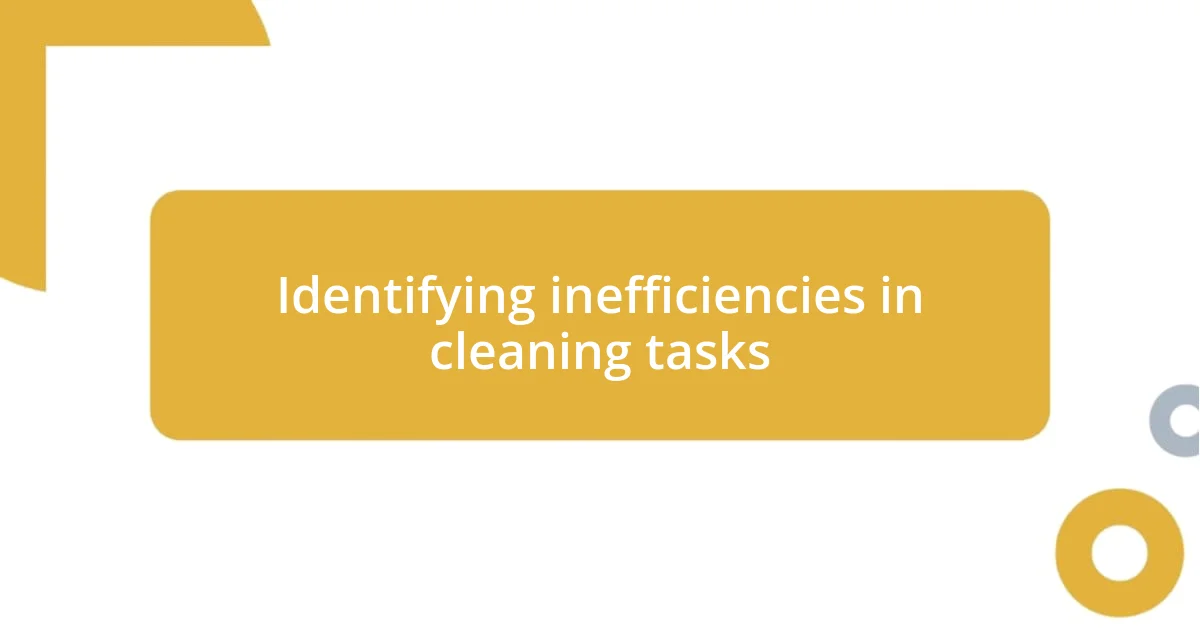
Identifying inefficiencies in cleaning tasks
When I took a closer look at how the cleaning tasks were being carried out, I noticed several bottlenecks that severely hampered the efficiency of the process. It was disheartening to see cleaners spend precious minutes hunting for supplies or waiting for approval to access certain areas. I remember a specific day when a cleaner was stuck for almost ten minutes waiting for a colleague to finish a task before they could begin their own. That’s time lost unnecessarily.
To pinpoint these inefficiencies, I created a simple checklist based on my observations and discussions:
- Duplicated Efforts: Identifying tasks that were being done by multiple team members at the same time.
- Supply Issues: Note instances when cleaners couldn’t find necessary materials, leading to delays.
- Communication Gaps: Documenting moments when cleaners needed clarification but didn’t have streamlined access to management.
- Accessibility Challenges: Recognizing areas that were challenging to navigate due to clutter or blocked paths.
By noting these issues, I realized that a little organization could go a long way in streamlining the entire cleaning process, fostering a smoother, more efficient workflow.
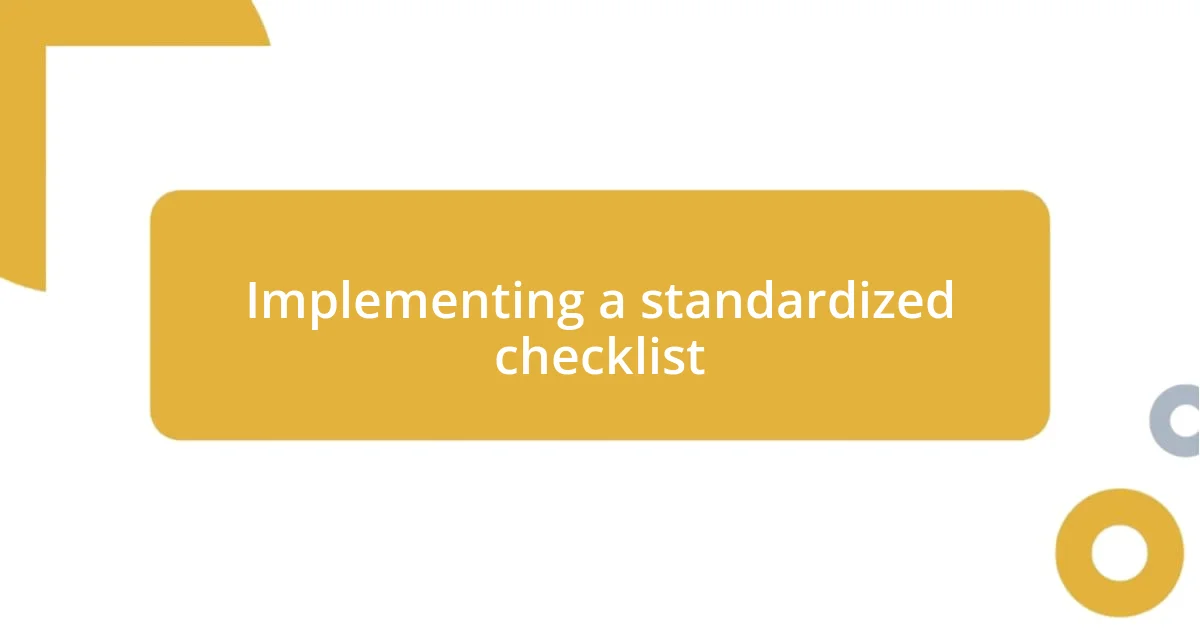
Implementing a standardized checklist
Implementing a standardized checklist transformed our cleaning process remarkably. I vividly recall the first time I presented the checklist to the cleaning team—it was like a light bulb went off. Everyone started nodding in agreement, recognizing that a consistent guide could minimize confusion and ensure no task was overlooked. I felt a wave of relief wash over me, knowing I had not only simplified their workflow but also empowered them with clarity in their responsibilities.
The checklist includes specific tasks for each area of the office, which I’ve found helps create a sense of accountability. I remember one cleaner telling me how reassuring it was to have a clearly defined set of duties. It made her feel more confident in her role, and it positively impacted her morale. With the checklist, we could also track each cleaning session, creating an opportunity for feedback and improvement.
Another significant advantage was the communication boost that came with this standardized approach. By having a visual representation of tasks, it opened up discussions about how we could make adjustments if needed. For instance, after reviewing the checklist together, we realized that some areas required more frequent attention than others. I can’t stress enough how vital it is to have a tool that not only organizes but also encourages collaboration and ongoing refinement in our processes.
| Feature | Before Checklist | After Checklist |
|---|---|---|
| Task Clarity | Lacked consistency | Standardized and clear |
| Employee Morale | Confused roles | Increased confidence |
| Feedback Opportunities | Minimal communication | Regular discussions |
| Efficiency | Frequent delays | Streamlined workflow |
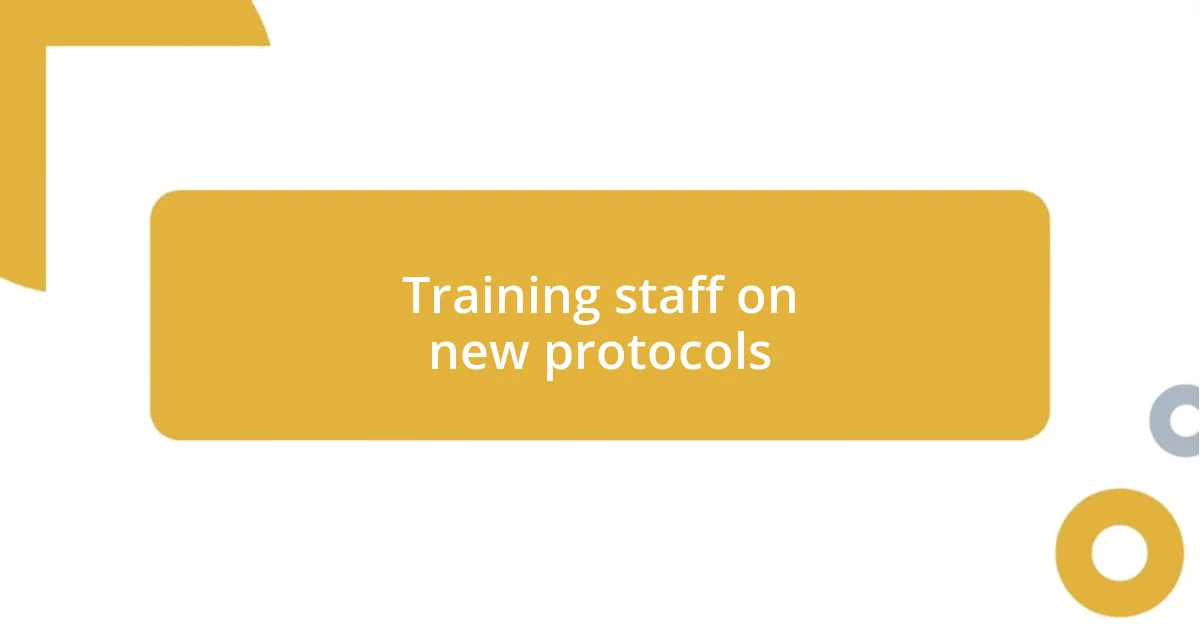
Training staff on new protocols
Training staff on new protocols was pivotal in our quest for efficiency. I remember when I gathered the entire cleaning team for our first training session. The room felt a bit tense—change can be daunting, right? But once we started discussing the new protocols, I could see faces begin to lighten up. It felt like we were all on the same team, ready to tackle challenges together.
To make the new procedures stick, I incorporated hands-on demonstrations. Instead of just telling them what to do, I encouraged them to practice these new protocols in real-time. One cleaner, Jamie, shared her relief after we practiced using the checklist. “Now I understand what’s expected,” she said, expressing how the clarity gave her a renewed sense of purpose in her work. It’s amazing how those little moments of understanding can boost morale and confidence.
Regular follow-ups were essential too. I’d check in with the team every week, creating a space for them to voice any struggles or successes with the new protocols. I often asked, “What’s working for you, and what’s not?” and the answers provided invaluable insights. I loved hearing stories about how they tackled issues using the checklist. These conversations transformed the training from a one-time event into an ongoing dialogue, reinforcing the idea that we were continuously learning and improving together.
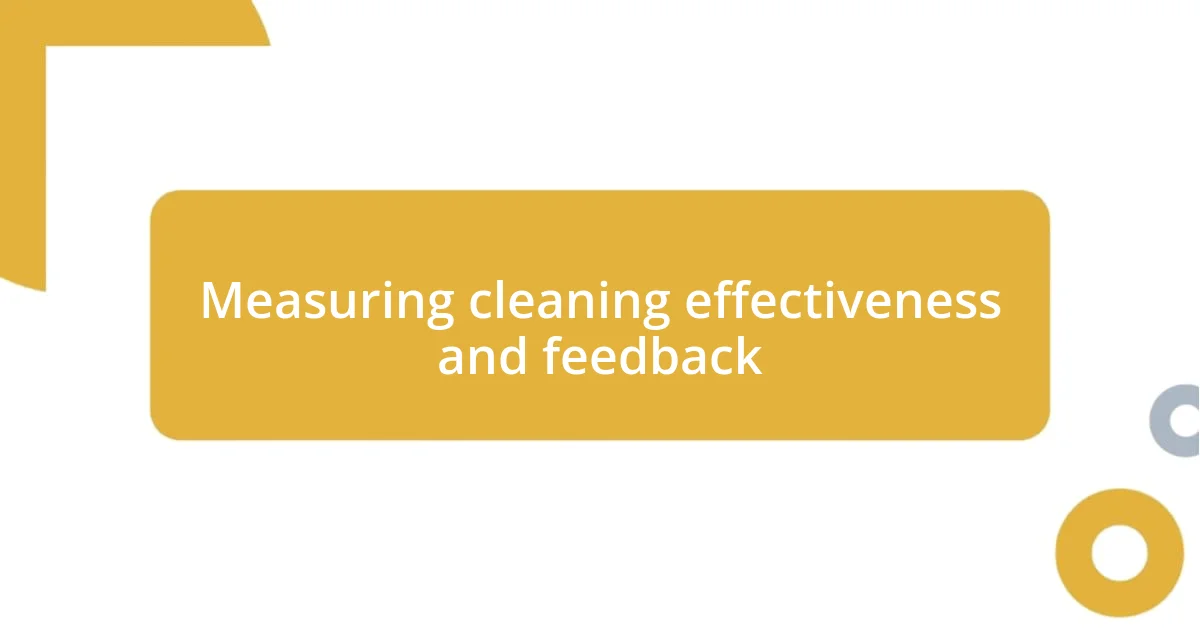
Measuring cleaning effectiveness and feedback
To truly measure cleaning effectiveness, I’ve discovered that feedback is invaluable. After each cleaning session, I made it a habit to check in with the staff. I’d often say, “What areas felt tricky today?” This simple question opened the door to rich conversations. One time, a team member mentioned that the kitchen cleaning took longer than expected because of spilled coffee stains. We addressed it together, ensuring she felt supported rather than embarrassed. That dialogue not only pinpointed improvement areas but also cultivated a sense of teamwork.
Surveys have also been a game-changer for gauging overall satisfaction. I remember feeling nervous the first time I sent out a survey to the office staff. However, the responses we received provided candid insights and revealed areas we’d overlooked. One comment that stuck with me was from a colleague who said, “I noticed the bathrooms were spotless, but it would be great to focus more on the break room.” It was moments like these that reinforced the connection between our cleaning efforts and the employees’ daily experience.
Finally, I’ve found that regularly reviewing cleaning performance creates accountability all around. Sharing results during team meetings encourages transparency and commitment. I recall one session where we celebrated our improved scores on the cleanliness scale and discussed how to tackle remaining challenges. It felt invigorating to jointly engage in problem-solving—reinforcing that we’re all champions in this journey to maintain a cleaner workspace. How else could we refine our cleaning process if not through shared accountability and success?
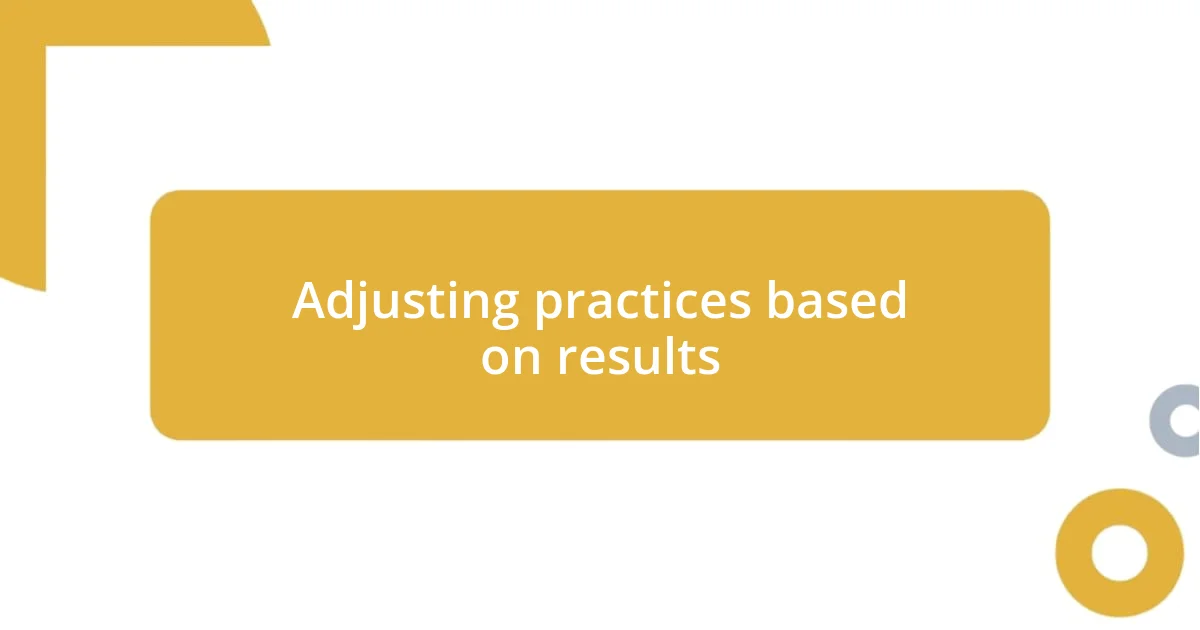
Adjusting practices based on results
Adjusting practices based on results is something I’ve come to see as a vital part of our cleaning process. Each week, as I analyzed feedback, I noticed patterns emerging. For instance, we had a spike in requests for additional floor mopping after rainy days. Taking this into account, I tweaked our schedule to ensure that these areas were prioritized, fulfilling a real need that the team identified. Have you ever observed how small adjustments can lead to significant improvements?
In another instance, I realized that our discussions during team check-ins often brought the same issues to light. It struck me—why not create a “hot topics” list? This living document allowed us to quickly address recurrent points of concern and share creative solutions from our cleaners. When Sandra suggested a new method for dusting that she read in a cleaning forum, it sparked excitement! It made me appreciate how collaborative feedback can lead to innovative solutions we might not have considered otherwise.
The ultimate lesson here has been that adapting our practices isn’t an event—it’s a continuous journey. Each adjustment led to a ripple effect, fostering a culture of improvement and empowerment. I remember asking the team, “What should we challenge next?” Their energy and ideas illuminated paths forward that I hadn’t even thought of. This experience reinforced something fundamental for me: when we listen and adapt, we don’t just enhance cleaning efficiency; we also create a more engaged and motivated team.
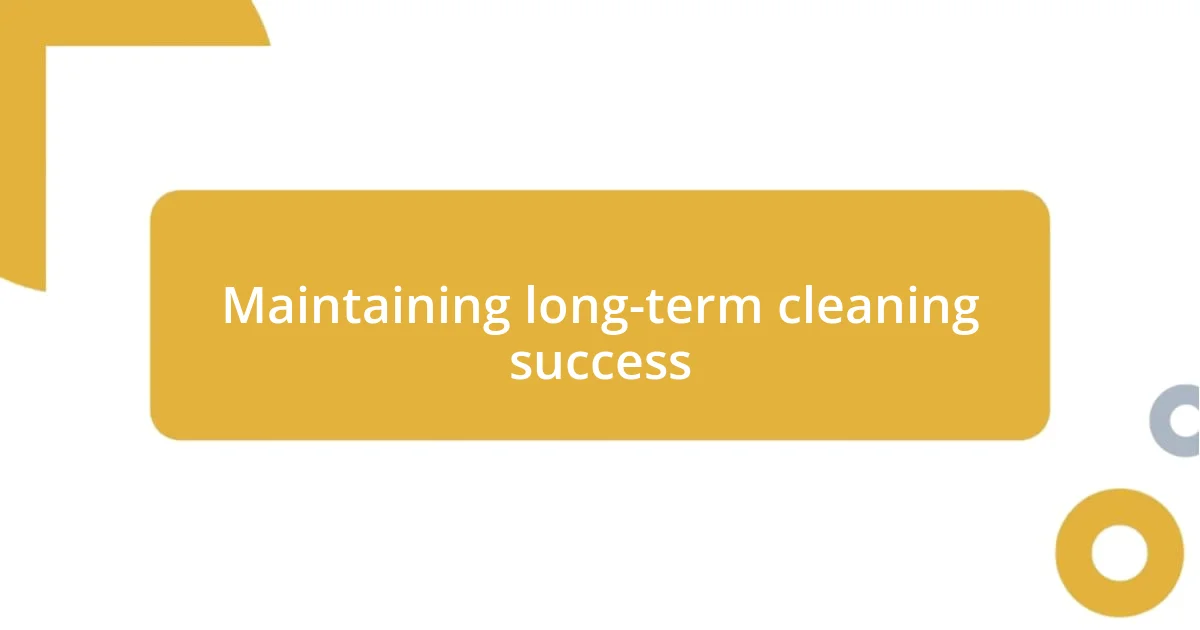
Maintaining long-term cleaning success
Maintaining long-term cleaning success in our office involves establishing habits that encourage consistency and pride in our work. I still remember the pride I felt when we introduced a monthly recognition program for our cleaning staff. Each time we celebrated an employee’s efforts, it created not only a sense of appreciation but also a shared commitment to maintaining high standards. Have you ever noticed how recognition can ignite passion and motivation in a team? In my experience, it makes a world of difference.
Another crucial element is the ongoing training we incorporated to keep the cleaning practices fresh. We set aside quarterly workshops to explore new techniques and products. The first time we tried out green cleaning solutions, there was a tangible excitement in the air. I can still recall the smiles as we learned how these eco-friendly products could elevate our cleaning process while benefiting the environment. It’s fascinating how education can uncover hidden potential and inspire the team to take pride in their work.
Lastly, I’ve learned the importance of regular brainstorming sessions to keep the cleaning process dynamic. Every few months, I bring everyone together to discuss challenges and share innovative ideas. One day, during a session sparked by a routine clean-up, someone proposed a rotating cleaning schedule for high-traffic areas. It was enlightening to see how a simple suggestion could lead to new efficiencies. How can a space improve if not by harnessing the collective wisdom of the team? This approach has solidified our dedication to long-term success, demonstrating that cleaning is not just about tasks—it’s about building a culture of teamwork and shared responsibility.
